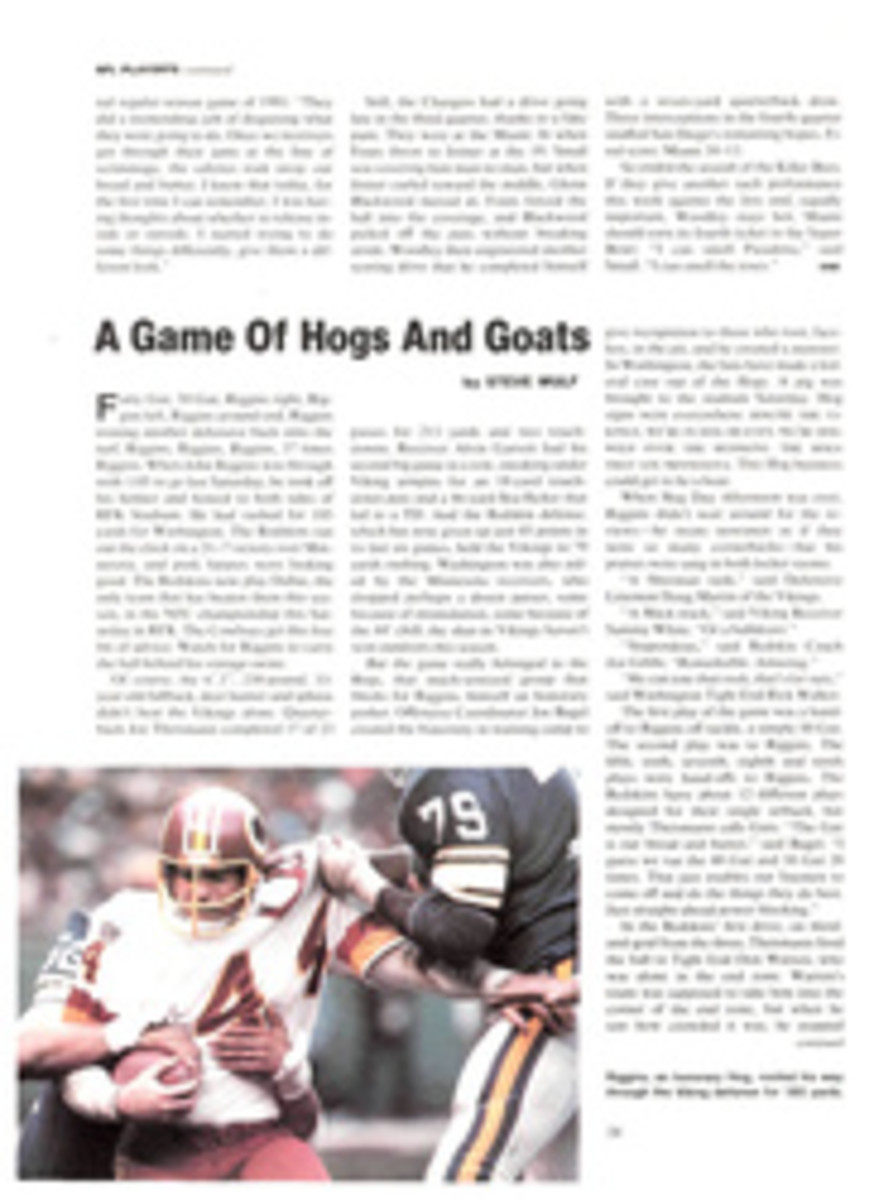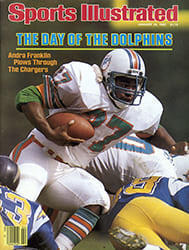
LETTER FROM THE PUBLISHER
In a sunny, paint-perfumed studio on the fourth floor of a Greenwich Village walk-up, Artist Bob Cunningham created the pictures for Sam Moses' story on trapper Oscar Cronk, which begins on page 94. As his wife, Jean, a fashion illustrator, worked in the next room, Cunningham took his customary work stance—"On one leg, like a big bird," says Jean—and let his imagination carry him from the Village to the wilds of Maine.
Cunningham may have been far from Cronk's two-room shack, but he's accustomed to working at a distance from his subject. Like most commercial artists, Cunningham re-creates scenes by piecing together images the text conjures up in his mind. "I remember a book excerpt for SI when all I had to work with was the manuscript and the author's last name," Cunningham says. "Since that was also an outdoors piece, I decided to put a beard on the author." When he brought the paintings in he learned that Pilgrim at Tinker's Creek was written by Annie Dillard.
Cunningham is so meticulous that such mistakes are rare. In doing this week's paintings he did have reference photos of Cronk, his shack and his dog, and he spent hours in The American Museum of Natural History and The New York Public Library. He even contacted the Maine Department of Conservation for pictures "of the way snow falls on a tree."
Cunningham, born 58 years ago in Herington, Kans., attended the University of Kansas and the Kansas City Art Institute and then came to New York to study at the Art Students League. He also worked part-time in a mannequin factory, painting faces—though not beards—on the male figures. "They found that when women painted a man's face, they had too sweet a touch," he says.
His first break as a commercial artist came when his wife shared a cab with an ad agency art director who was looking for someone to do the illustrations for a men's outerwear account. Cunningham frantically assembled a portfolio and landed the job. He approached SI in 1964, but it was a year before we gave him an assignment, on goose hunting (Oct. 4, 1965). He has since worked on some 20 other stories for SI and has an array of corporate clients that reads like a selection from the Fortune 500, though his most widely known work may be the 1980 Olympic stamps he designed for the U.S. Postal Service.
Despite his commercial success, Cunningham is still working to refine his painting. He has been doing studies of cadavers: "When you look at the hand of a living person," he says, extending paint-stained fingers, "all you see is the hand. With a cadaver you can reach in, pull a tendon and see how the hand moves." Betraying another passion, classical music, he says, "The paintings are like a symphony, whereas the studies are like a cello sonata."
Here at SI we're looking forward to a lot more concertizing.
PHOTO
BOB CUNNINGHAM IN HIS STUDIO—PHYSICALLY, ANYWAY

